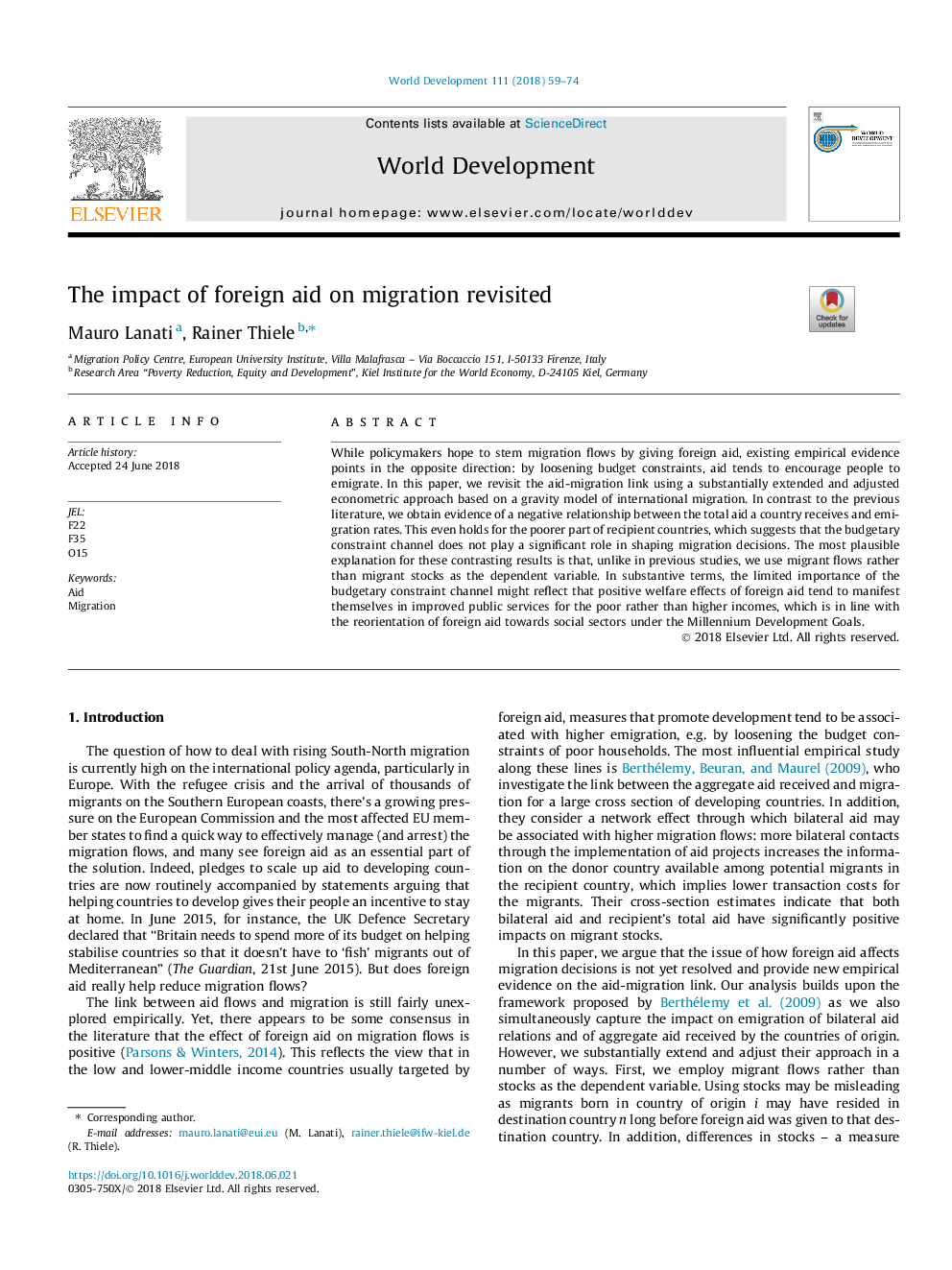| Article ID | Journal | Published Year | Pages | File Type |
|---|---|---|---|---|
| 7391053 | World Development | 2018 | 16 Pages |
Abstract
While policymakers hope to stem migration flows by giving foreign aid, existing empirical evidence points in the opposite direction: by loosening budget constraints, aid tends to encourage people to emigrate. In this paper, we revisit the aid-migration link using a substantially extended and adjusted econometric approach based on a gravity model of international migration. In contrast to the previous literature, we obtain evidence of a negative relationship between the total aid a country receives and emigration rates. This even holds for the poorer part of recipient countries, which suggests that the budgetary constraint channel does not play a significant role in shaping migration decisions. The most plausible explanation for these contrasting results is that, unlike in previous studies, we use migrant flows rather than migrant stocks as the dependent variable. In substantive terms, the limited importance of the budgetary constraint channel might reflect that positive welfare effects of foreign aid tend to manifest themselves in improved public services for the poor rather than higher incomes, which is in line with the reorientation of foreign aid towards social sectors under the Millennium Development Goals.
Related Topics
Social Sciences and Humanities
Economics, Econometrics and Finance
Economics and Econometrics
Authors
Mauro Lanati, Rainer Thiele,
